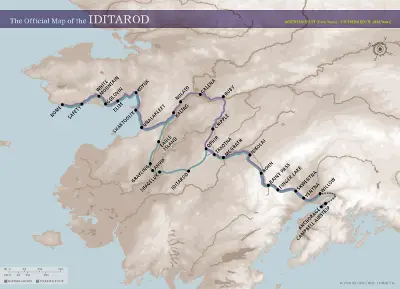|
Iditarod 2019: Ceremonial Start in the Snow
March 3, 2019 The ceremonial start marked the beginning of events for the 47th annual running of the Iditarod Trail Sled Dog race. Unlike in recent years, the snow is plentiful.  During the ceremonial start, the mushers (15 of them women) and their teams left at two-minute intervals and made their way leisurely through the 11-mile crowd-lined Anchorage route. 
The race gets underway in earnest the day after the ceremonial start. The start is in Willow; the finish is in Nome. The race will traverse the Southern Route this year. The Southern Route has 19 checkpoints and goes through Ophir, Iditarod, Shageluk, Anvik, Grayling, Eagle Island, Kaltag, Unalakleet, Shaktoolik, Koyuk, Elim, Golovin, White Mountain, and Safety before ending in Nome. Joar Ulsom of Norway, the 2018 winner, is returning, a repeat win on his mind. Another familiar face to race fans will be Lance Mackey. The four-time winner has battled throat cancer and other health problems in recent years and hasn't started since 2016. Aliy Zirkle, three times a second-place finisher, is back, as are four-time winners Martin Buser and Jeff King and three-time champion Mitch Seavey, whose win in 2017 made him the oldest champion. (He was 57 at the time.)Race organizers have made a number of significant rule changes in the name of safety. Among the changes:

The changes came as the result of a report following an investigation into twin controversies from the 2017 race: four dogs died during the race, the most in nearly a decade, and more than one dog on the team of four-time champion Dallas Seavey failed a drug test. The number of participants is at an ebb. The prize money, to the winner and overall, is the same as last year although well below what was handed out in 2017. A number of sponsors have not come back for a couple of years now. The event, which began in 1973, commemorates the 1925 Serum Run a desperate delivery of life-saving medicine across the frozen wilderness to children in Nome. |
Social Studies for Kids |
Social Studies for Kids
copyright 2002–2024
David White




